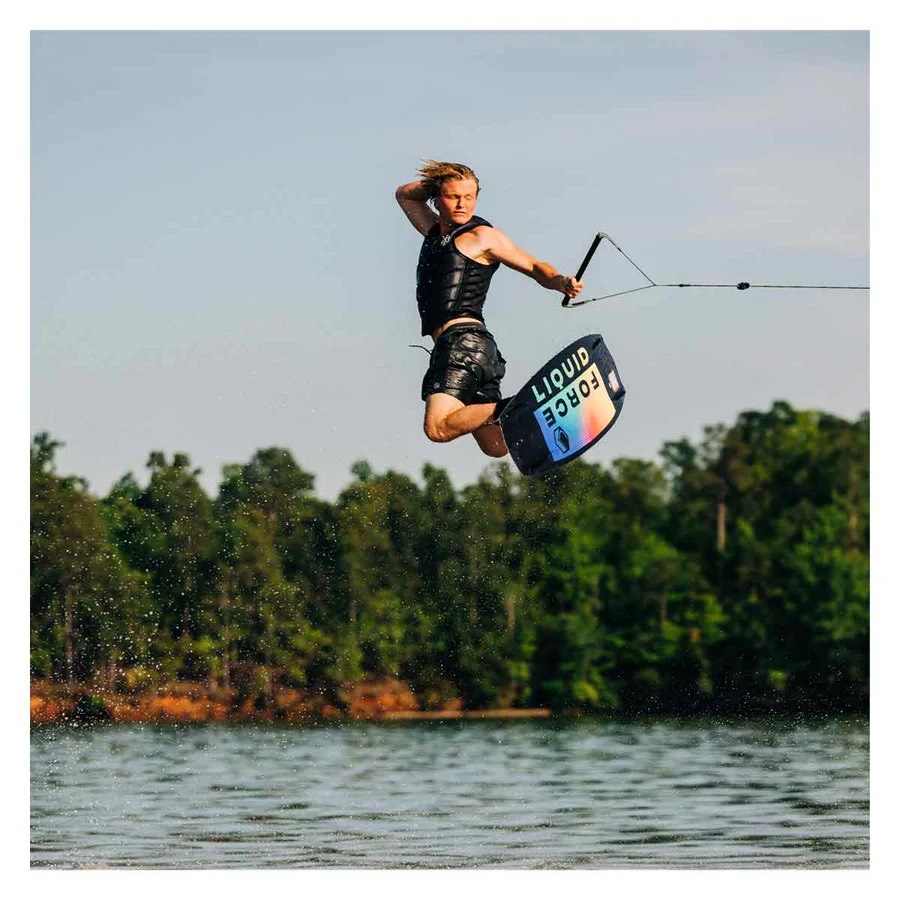Wakeboarding is an exhilarating water sport that blends the best aspects of surfing, water skiing, and snowboarding. With its rapid rise in popularity, more and more people are eager to try wakeboarding and experience the adrenaline rush that comes with gliding over the water and performing daring tricks. However, like any new activity, mastering wakeboarding requires patience, practice, and the right technique. In this comprehensive guide, we’ll explore everything you need to know to begin your wakeboarding journey, from the basics to essential tips that will help you improve and gain confidence.
1. Understanding Wakeboarding
Before jumping into the water, it’s important to understand what wakeboarding is all about. In wakeboarding, the rider is towed behind a boat while standing on a wakeboard, a short, wide board with bindings that secure the rider’s feet. The boat creates wakes (waves) behind it, and the rider uses these waves to perform various maneuvers and tricks.
Wakeboarding is relatively new, having evolved in the 1980s from a combination of water skiing and surfing. Today, it’s one of the most popular watersports worldwide, attracting a wide range of enthusiasts, from beginners to professionals.
2. Choosing the Right Gear
Before you can hit the water, you’ll need to equip yourself with the right wakeboarding gear. Each piece of equipment plays a crucial role in your safety and performance on the water.
Wakeboard
Choosing the right wakeboard is the first step toward a successful wakeboarding experience. Wakeboards come in various sizes and styles, and it’s important to choose one that fits your weight and skill level.
- Size: Boards are measured in centimeters, and the size you choose should be based on your weight. Generally, lighter riders should choose smaller boards, while heavier riders should go for larger ones.
- Shape: Boards can be continuous or three-stage. A continuous rocker (smooth curve) provides a faster, more predictable ride, which is great for beginners. A three-stage rocker (flat center with curved tips) offers more pop off the wake but can feel less stable.
Bindings
Wakeboard bindings are what connect you to the board. They should fit snugly but comfortably. Beginners should look for bindings that are easy to put on and take off, with plenty of ankle support. Most bindings are adjustable to fit different foot sizes, but it’s important to ensure they are secure and provide adequate support.
Life Jacket
A properly fitting life jacket is essential for safety. Make sure your life jacket is Coast Guard-approved and fits snugly without restricting your movement. Even if you’re a strong swimmer, wearing a life jacket is mandatory, as wakeboarding can be unpredictable, and falls are inevitable.
Helmet
While not always required, wearing a helmet is recommended, especially for beginners. A helmet protects your head from collisions with the board, water, or obstacles in cable parks. Choose a lightweight, water-specific helmet that fits comfortably.
Tow Rope
The tow rope is what connects you to the boat. Look for a non-stretch, wakeboarding-specific rope, which provides better control and response than traditional ski ropes. The length of the rope will vary based on your skill level, with beginners typically using shorter ropes (about 65-75 feet).
3. Preparing to Ride
Once you have all your gear, it’s time to get out on the water. As with any physical activity, proper preparation is key to preventing injury and ensuring a smooth experience.
Warm-up
Wakeboarding is a full-body workout, so it’s important to stretch and warm up before hitting the water. Focus on your legs, core, and shoulders to loosen up the muscles you’ll be using the most. Simple stretches, combined with a few dynamic movements like arm circles and lunges, can help prevent strains and cramps.
Getting in the Water
When you’re ready to start wakeboarding, begin by floating in the water with your life jacket on, your knees bent, and your board in front of you. The rope handle should be in your hands, with your arms straight and relaxed. Make sure you’re positioned directly behind the boat.
Starting Off
The key to getting up on a wakeboard is patience and balance. Many beginners make the mistake of trying to stand up too quickly, which can lead to falling. Instead, allow the boat to do the work.
- As the boat starts to move, keep your knees bent and your arms straight.
- Let the boat gradually pull you up. Stay in a crouched position and don’t try to stand up immediately.
- Once you’re on top of the water, slowly straighten your legs while maintaining a slight bend in your knees. Keep your chest up and eyes looking forward.
It may take a few tries to get the hang of it, but don’t get discouraged! Wakeboarding requires patience and practice, and every fall is an opportunity to learn.
4. Basic Riding Techniques
After you’ve successfully stood up, the next step is learning how to control your board and maintain balance.
Positioning
Keep your weight centered over the board and your knees slightly bent. Your lead foot should be pointed toward the boat (similar to snowboarding or skateboarding stance). Your back foot should be perpendicular to the board. Focus on keeping your upper body relaxed, and your eyes on where you want to go, rather than looking down at your feet.
Turning
To initiate turns, shift your weight slightly to one side. Turning on a wakeboard is similar to carving on a snowboard:
- Toe-side turn: Lean forward onto your toes, allowing the board to tilt toward the water. Your body should naturally rotate in the direction of the turn.
- Heel-side turn: Shift your weight onto your heels to tilt the board backward. Again, your body will naturally follow.
Practice gentle turns at first to get a feel for how the board responds to your movements.
Crossing the Wake
Once you’re comfortable riding and turning, you can begin crossing the wake. Start by edging out to the side of the wake by applying pressure to your heels or toes. Once you’re outside the wake, turn back in and ride over it.
As you approach the wake, keep your knees bent and stay relaxed. The wake will give you a small lift, and with practice, you’ll learn how to time your jumps and get more air.
5. Common Beginner Mistakes
Wakeboarding can be challenging for beginners, and it’s normal to make mistakes. Here are some common errors and how to avoid them:
- Standing up too quickly: Let the boat pull you up rather than trying to stand up immediately.
- Stiff legs: Keep your knees slightly bent at all times to absorb bumps and wakes.
- Looking down: Keep your eyes forward, not on your board. Looking down can throw off your balance.
- Over-gripping the rope: Relax your grip on the rope. Holding it too tightly can lead to fatigue and loss of control.
6. Progressing in Wakeboarding
As you gain confidence and improve your skills, you can begin exploring more advanced techniques and tricks.
Learning to Jump
Jumping off the wake is one of the most exciting aspects of wakeboarding. Start by crossing the wake at a moderate speed, then edge out slightly before turning back toward the wake. As you hit the wake, push down on your back foot and pull up on your front foot. Keep your knees bent to absorb the impact of the landing.
Grabs and Spins
Once you’re comfortable with jumping, you can start adding style by incorporating grabs (grabbing the board with one or both hands) and spins. Spins are more advanced and require excellent balance and coordination.
Riding Switch
Riding switch means riding with your non-dominant foot forward. This technique is more difficult but can help you improve your overall balance and control. Practice riding switch at slower speeds until you’re comfortable with the different stance.
7. Staying Safe on the Water
Wakeboarding can be a lot of fun, but safety should always come first. Here are a few safety tips to keep in mind:
- Always wear a life jacket, even if you’re a strong swimmer.
- Make sure the driver of the boat is experienced and aware of your skill level.
- Stay clear of other boats and obstacles.
- Don’t push yourself too hard; if you’re feeling fatigued, take a break.
- Warm up and stretch before riding to prevent injuries.
Conclusion
Wakeboarding is an exciting and challenging sport that offers endless possibilities for progression. Whether you’re just starting or looking to improve your skills, the key to mastering wakeboarding lies in patience, practice, and persistence. By following the tips in this guide and dedicating time to honing your technique, you’ll soon be riding the waves like a pro.
Stay engaged for the latest news and alerts! Discover Tribune


